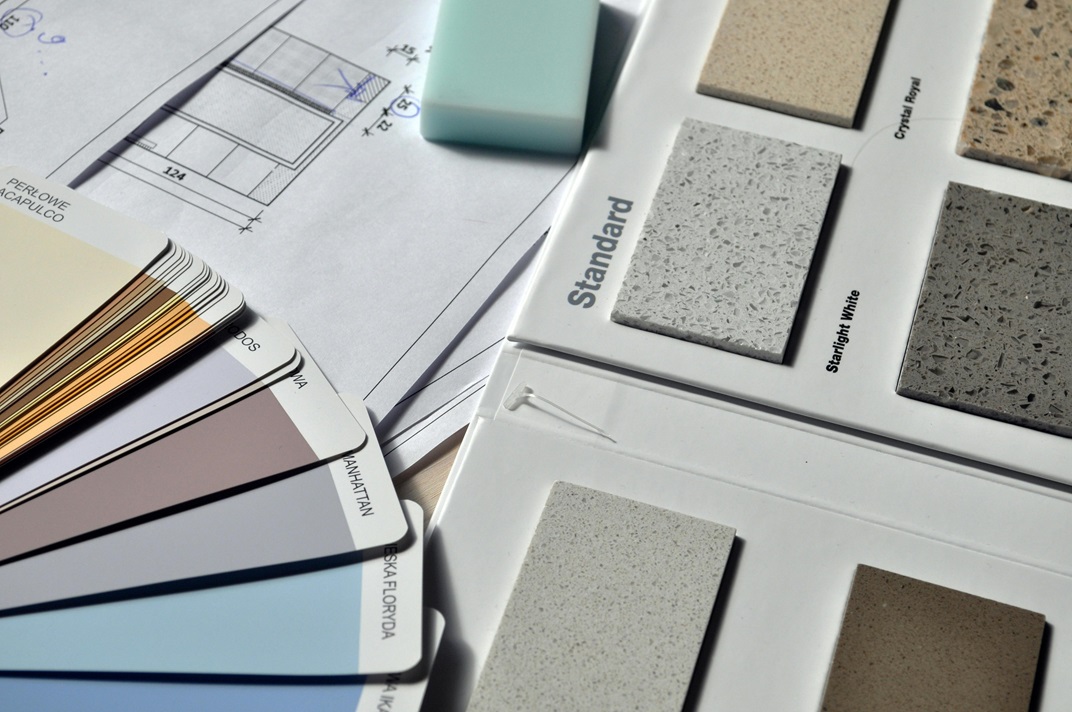A great way to inject life into your home’s interior is to add splashes of colour. Using different hues and shades can help set the tone and mood of your living spaces, creating more welcoming and enjoyable environments. However, making colour work in your favour has its challenges. For instance, if you want to incorporate multiple colours into one room, you have to make sure to achieve harmony.
Balance is key to preventing different colours from clashing with one another and, fortunately, there are several things you can do to get the right balance in your home’s interior design. Here are five tips to consider:
Select a Colour Scheme
Choosing a colour scheme is essential for setting the foundation for the overall look and feel of your home. It ensures that all the elements in the room work together harmoniously, resulting in a space that’s visually pleasing and comfortable. To create a cohesive colour scheme, start with a base colour that matches the mood you’re aiming for. This base colour can be a neutral shade like beige or grey, which are more versatile, or a bolder colour that shows off your personality. After picking your base colour, choose two to four colours that work well with the base to complete the colour scheme. You can use a colour wheel to select complementary colours to create a striking contrast, or analogous colours for a more harmonious look.
Furthermore, take into consideration the lighting in your space when selecting colours, as natural and artificial light can change how colours appear to the eye. A colour that appears perfect in the store’s bright lighting might look different at home where the illumination is more muted. As such, it’s a good idea to test paint samples on your walls and observe them at different times of the day to ensure they give you the effect you want.
Use the 60-30-10 Rule Effectively
The 60-30-10 rule is a classic guide to help you distribute colours in a room in a balanced way. According to this rule, 60% of the room should be the dominant colour, 30% should be a secondary colour, and 10% should be an accent colour. This mix creates a pleasing look without overwhelming the space.
The dominant colour, which will cover the largest area, is usually used for the walls, large pieces of furniture, or flooring. The secondary colour supports the dominant hue, meant to add depth and interest in the space while providing a noticeable difference. This is often used on upholstery, curtains, or a feature wall. Finally, the accent colour is often used sparingly in smaller items, like throw pillows, art prints, or decorative accessories. Nevertheless, this colour adds a pop of vibrancy to the space and ties the whole colour scheme together. Thus, the accent colour is where you can have some fun and be bold. An example of a space that uses the 60-30-10 rule may have dark grey coloured walls with an Oxford blue velvet sofa and yellow-framed art pieces.
Choose a Focal Piece in Each Room
Choosing a focal piece in each room is an effective way to anchor your design and draw attention to a specific area. It can be anything that stands out and sets the tone for the rest of the décor, like a large window with a beautiful view, a colourful rug, or a unique piece of furniture. Identify what naturally draws your eye when you enter the room and then, once you’ve chosen your focal piece, arrange the rest of the room to complement and enhance it.
Your focal piece doesn’t have to be the most expensive item in the room but it should be something that stands out and adds character. With this in mind, you can choose anything that comes in an eye-catching colour. For instance, if your focal piece is a vibrant painting, you might choose colours from the artwork to inspire your room’s colour scheme and arrange your furniture to face it.
Incorporate Texture and Patterns
Texture and patterns add visual interest and complexity to a room, preventing it from looking flat or monotonous. They can make a space feel more inviting and allow you to express your creativity. Textures can range from the smoothness of a leather sofa to the roughness of a brick wall, while patterns can include everything from subtle stripes to bold florals. Using a mix of textures and patterns can make a room feel more dynamic and engaging. Keep in mind that you have to select those that complement your overall colour scheme and style to create a balanced look.
Take the Space’s Existing Elements Into Account
When designing a room, it’s crucial to consider the existing elements that cannot be easily changed. These elements include architectural features, fixed furnishings, flooring, and even the view from the windows. Taking these things into account ensures that your design feels integrated and well-thought-out. It also helps to create a seamless transition between the old and the new, making the space feel more natural. Furthermore, it can save time and money, as you are working with what you already have rather than making unnecessary changes. By working with these elements, rather than against them, you can create a more cohesive and harmonious design in terms of colour and balance.
Achieving the right colour balance in your home interior design can be a daunting experience. With the help of these tips, however, you can transform your living space into a harmonious and visually appealing home environment.
Photo by Pixabay: https://www.pexels.com/photo/gray-standard-color-book-near-green-eraser-159045/

